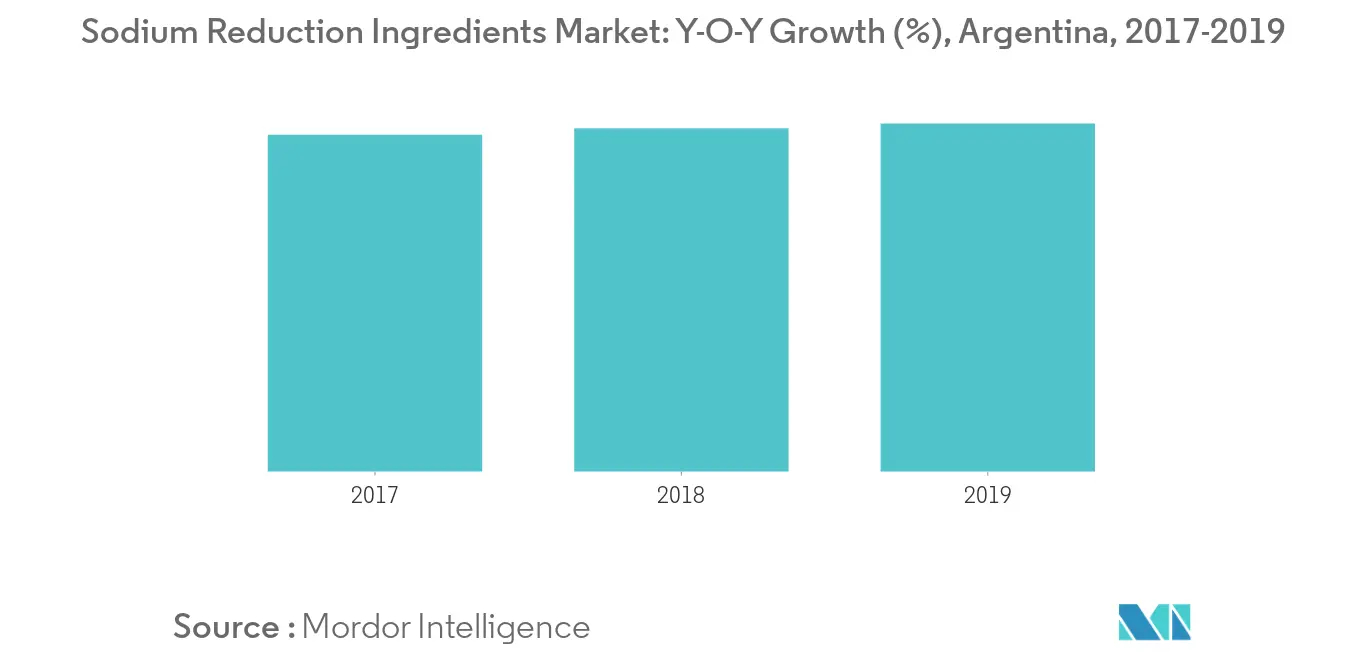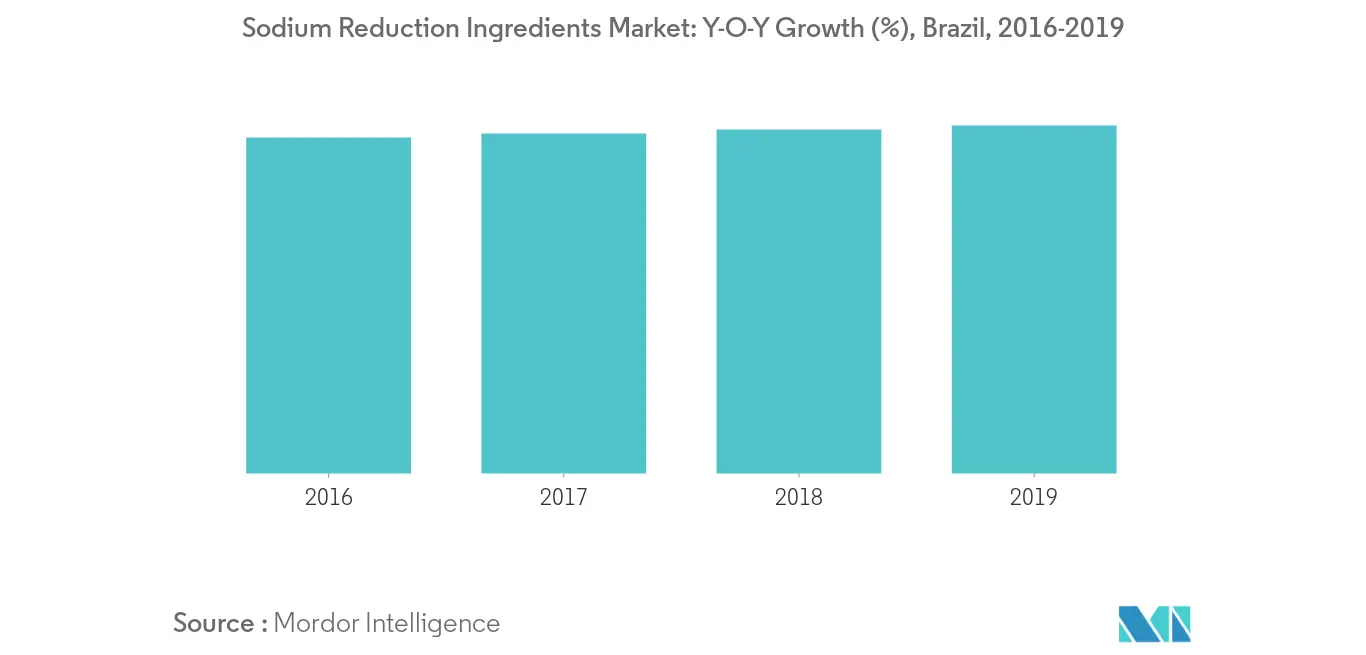Market Trends of South America Sodium Reduction Agents Industry
This section covers the major market trends shaping the South America Sodium Reduction Agents Market according to our research experts:
The Hyping Awareness Regarding Less-Sodium Diets is Driving the Market
Sodium reduction ingredients make up an important segment of the food additives industry and are utilized for either reducing the salt content in food products or entirely replacing it. The prime role of these ingredients is to cut off the excessive intake of sodium that causes adverse health effects, hypertension being foremost among them. Stroke, heart failure, osteoporosis, stomach cancer, kidney disease, kidney stones, enlarged heart muscle, and headaches are also caused due to the higher sodium intake. Excess sodium can also be the cause of increased water retention that leads to puffiness, bloating and weight gain. Thus, in order to maintain a healthy lifestyle, the consumers in the region are shifting to reduced-sodium food products. Brazil had set up a salt reduction programme in 2007 which has had a successful impact on the country.

Brazil is Likely to Pose Opportunities for the SRI Market
The Brazilian Household Budget Survey 2008-2009 found that, on average, Brazilian adults consumed 12g of salt per day which is more than double the WHO recommendation of 5g per day and thus the related health issues were analyzed and the government stepped in to reduce the salt content in the daily diet of the Brazilians. A reduction was implied on the main source of salt in the Brazilian diet, salt and salt-based condiments, which make up more than three quarters (76%) of daily salt intake. Since 2007 Brazil's Ministry of Health has been working with the Brazilian Association of Food Industries to improve the nutritional profile of the food. The main focus was initially a reduction of trans-fatty acids but later, salt reduction also became a major target. In addition to reducing the salt content of processed foods, the Brazilian government aimed to reduce the excessive population salt intake by 2020 through the promotion of healthy eating and increased supply of healthy foods, formulating guidelines for nutritional labelling of food and education for consumers, industry and health professionals. Evaluation of products, in 2017, found that 94.9% of instant pasta brands, 97.7% of bread brands and 10% of bun brands have achieved the first sodium targets


